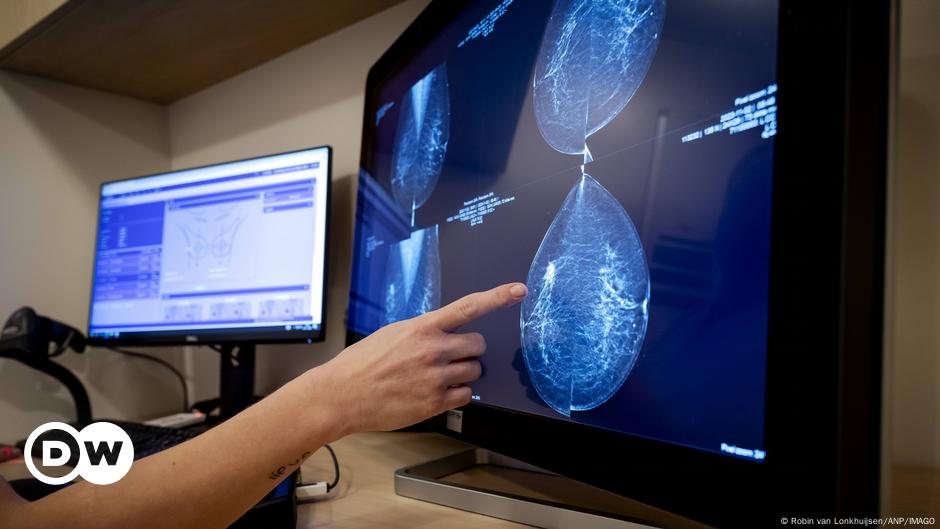What you need to know
- New AI-based breast cancer screening method detected stage 1A cancer in at least 9 out of 10 cases.
- AI is already being deployed as a complementary tool in healthcare services around the world.
- Larger trials are needed to validate preliminary results.
AI is already proving useful in detecting cancer with higher accuracy – improving patient outcomes and saving lives.
The earlier doctors detect breast cancer, the better the chances of beating it.
AI algorithms have become so good at detecting breast cancer from radiology scans that in some cases they have begun to outperform humans – the UK’s National Health Service (NHS) is now using AI to analyze mammograms, Which is helping in detecting cases of breast cancer. Remembered by human doctors,
But while AI can speed up the analysis of cancer screening, doctors also need new ways to identify cancer markers in the early stages, before cancerous tumors show up on scans.
A new method of blood screening combined with AI to detect breast cancer at an early stage has been tested in a pilot study.
The study, which was published in Biophotonics Journal In November, found that their method could detect stage 1A breast cancer with an accuracy of 90–100%.
“This study is a milestone in identifying breast cancer subtypes with high accuracy at a very early stage,” said study lead author Kevin Saruni Tippett, of the University of Edinburgh. “Early cancer diagnosis saves lives – that’s why Our study is important.” , UK.
However, Tippett said the approach was tested on only 24 patients and is not ready for hospital use until they confirm the results in larger-scale studies.
New way to detect breast cancer early
Traditional methods of cancer detection are based on detecting markers of cancerous tumors.
X-ray mammograms can be used to identify changes in breast tissue that indicate cancer, often before cancer symptoms appear. Or biopsy tests can detect molecular signatures of cancer cells in the body.
But these methods can often miss early-stage cancers — it’s “like finding a needle in a haystack,” Tippett told DW.
“Most technologies are focused on finding that needle, but they don’t look at the whole picture around it.”
Tippett’s study tested an approach that collects information about how the body responds to cancer.
Instead of just looking for cancer tissue, they discovered “molecular fingerprints” that indicate the body is fighting breast cancer.
These fingerprints “are from the cancer itself, or from cells in the body, like the immune system, that fight cancer,” Tippett said.
The molecular fingerprints allowed them to see early signs of stage 1A breast cancer, when growths are only a few millimeters in size and are often missed in mammograms or biopsies.
The researchers took blood samples from patients and analyzed them with a technique called Raman spectroscopy to measure molecule patterns from the patient’s blood samples.
Raman spectroscopy is a commonly used chemical technique that is “beginning to show great potential for clinical diagnosis [of many diseases]”, said Juergen Popp, director of the Leibniz Institute of Photonic Technology in Jena, Germany.
AI tools not yet ready for clinical use
Based on the analysis of blood samples, researchers trained a machine learning algorithm to detect breast cancer.
Testing blood samples from 24 patients, they found that their AI algorithm could detect breast cancer with 90-100% accuracy depending on the type of breast cancer.
Tippett described AI as “aiding in analysis” rather than replacing humans doing the work of detecting cancer.
While Pop was positive about the study’s approach, he urged caution that the small sample size “limits the broader generalizability of these findings”.
“Larger trials are necessary to validate its clinical utility and scalability. [But] “The high sensitivity and specificity achieved supports the potential for larger trials,” Popp said.
Tippett said he already has plans to “do a larger study and see if we can reproduce the findings in a larger trial.”
early detection of breast cancer
Tippett said the study shows that Raman spectroscopy combined with AI could provide a new method for rapid and highly accurate detection of breast cancer in the early stages.
This will allow for early intervention and improve the patient’s overall prospects, as cancers diagnosed at stage 1A have a much higher survival rate than cancers diagnosed at later stages.
Small tumors are easier to treat because they are localized to a specific area, making them easier to remove or target with treatments such as surgery or radiation.
Tippett is already working with other researchers to test his approach in other types of cancer.
“We’re looking at the so-called ‘Big Four’ cancers – lung, colorectal, prostate – [and breast] cancer. These four cancers account for about 50% of global cancer incidence,” he said.
“We need to make great efforts for early diagnosis and early screening. This will improve the quality of life and chances of survival for millions of people around the world.”
Edited by: Matthew Ward Agius
Source


